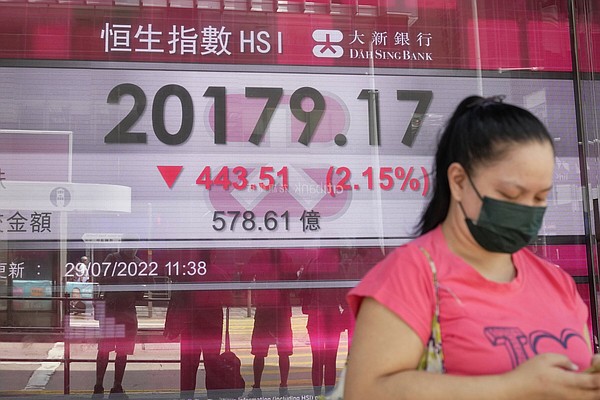Stocks of the month progress the best since the end of 2020
Stocks racked up more gains on Friday as Wall Street closed its best month since November 2020, a welcome break for investors after a trying year for the market.
The S&P 500 index, a benchmark for many equity funds, rose 1.4% and ended up 9.1% in July. A rebound in tech stocks, large retailers and other companies that rely on direct consumer spending helped fuel the index’s overall gains this month. The index is still down 13.3% for the year.
The tech-heavy Nasdaq rose 1.9%, ending the month up 12.4%, while the Dow Jones Industrial Average rose 1% and posted a 6.7% gain for the month.
The latest rally came as investors weighed a mix of corporate earnings reports and new data showing inflation jumped the most in four decades last month.
Stock market gains in recent weeks have been fueled by better-than-expected corporate earnings reports and falling bond yields, which have retreated after climbing much of this year on interest rate expectations. higher interest.
“You’ve seen 10-year Treasury yields drop precipitously,” said Rob Haworth, senior investment strategist at US Bank Wealth Management. “With inflation so high, I think the expectation is that the Fed will stay on track, but it’s damaging enough to the economy that it needs to pivot in 2023.”
The S&P 500 rose 57.86 points to 4,130.29. The Dow gained 315.50 points to close at 32,845.13. The Nasdaq gained 228.09 points to 12,390.69.
Small company stocks also gained ground. The Russell 2000 rose 12.20 points, or 0.7%, to 1,885.23. It ended July with a 10.4% gain.
Weak economic data, including a report on Thursday showing the U.S. economy contracted last quarter and could be in recession, also boosted stocks higher by giving some investors reassurance that the Federal Reserve will be able to slow its aggressive pace of rate hikes sooner. provided that.
The central bank on Wednesday raised its main short-term interest rate by 0.75 percentage points, taking it to its highest level since 2018. The Fed is raising rates in a bid to slow the US economy and rein in inflation.
An inflation gauge closely watched by the Fed jumped 6.8% in June from a year ago, the biggest increase in four decades, leaving Americans with no relief from soaring prices. Month-over-month inflation accelerated to 1% in June from a monthly rise of 0.6% in May, the Commerce Department said on Friday.
The numbers underscored persistent inflation that is eroding Americans’ purchasing power, weakening their confidence in the economy and threatening Democrats in Congress ahead of November’s midterm elections.
However, some market watchers cautioned against overemphasizing the June data.
“This inflation measure is for June and we know a lot has changed since then, especially gasoline prices, so investors should put this inflation report in historical context,” Jeffrey said. Roach, chief economist at LPL Financial. “Looking ahead, July inflation rates will come down a bit from the previous month as food and energy costs are expected to decline in July.”
Still, inflation hit one company in its earnings on Friday: consumer staples giant Proctor & Gamble. Shares of laundry detergent maker Tide fell 5.3% after the company said consumers were cutting back, but the company’s recent price increases have kept earnings up.
Other corporate earnings reports were more encouraging.
Exxon and Chevron posted record quarterly profits last quarter amid high oil and gas prices. The two companies earned $46 billion last quarter, about four times the amount they earned in the same period a year earlier. Shares of Chevron jumped 8.9% to a six-week high, while Exxon rose 4.6%.
Amazon jumped 10.4% for the biggest gain in the S&P 500 after the company posted a quarterly loss, but its revenue jumped sharply in the quarter.
Apple rose 3.3% after its quarterly profit beat Wall Street expectations. The iPhone maker saw profits for the April-June period fall 10% while revenue edged up 2% as it grappled with manufacturing headaches and inflationary pressures.
It was a mixed day in the bond market. The two-year Treasury yield, which tends to move with Fed expectations, rose to 2.89% from 2.87% Thursday night. The 10-year yield, which influences mortgage rates, fell from 2.67% to 2.65%.


Comments are closed.